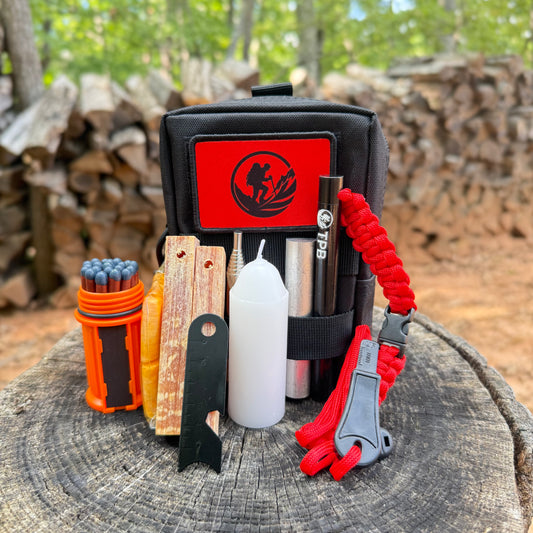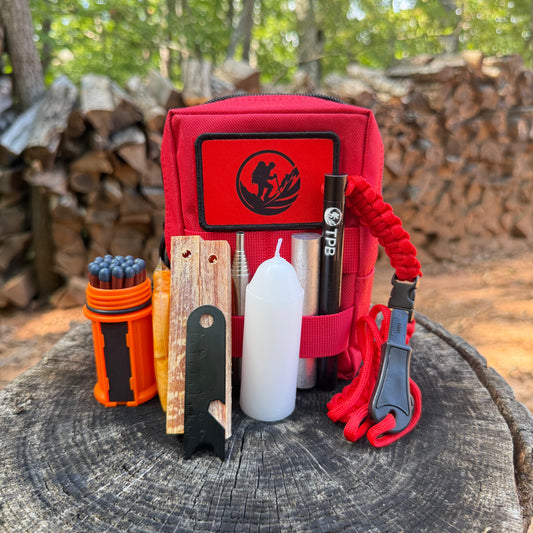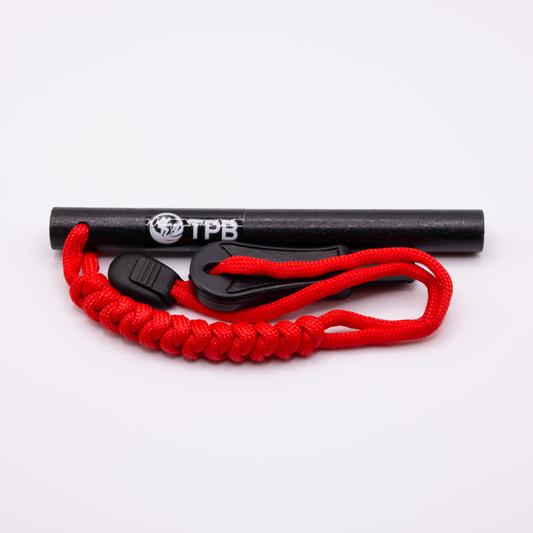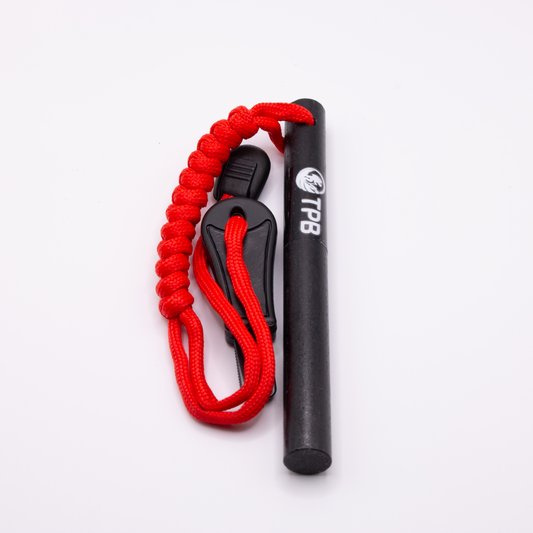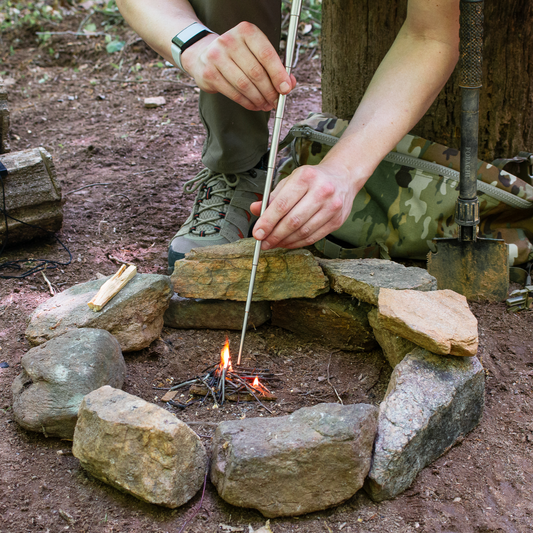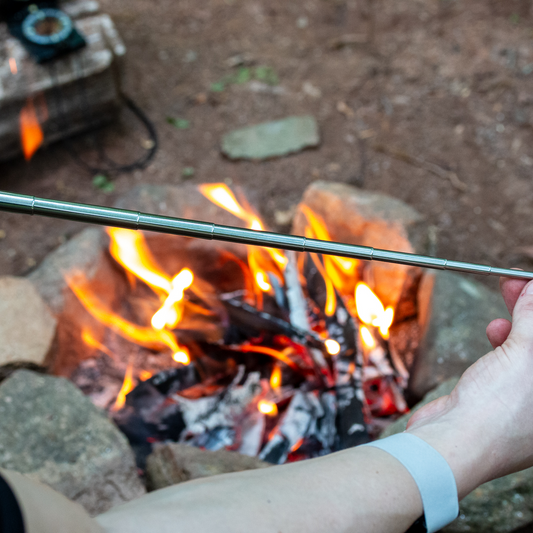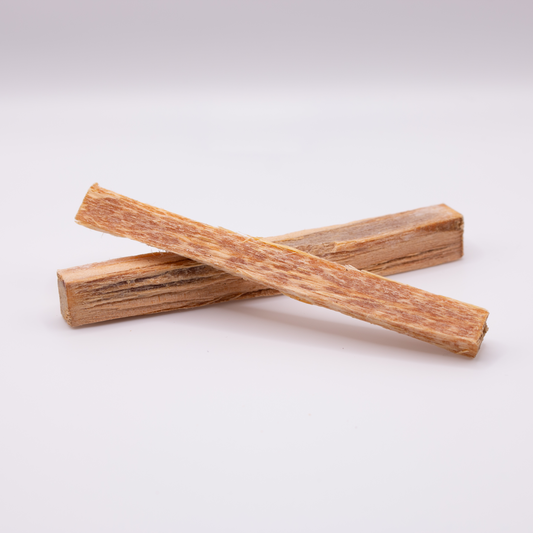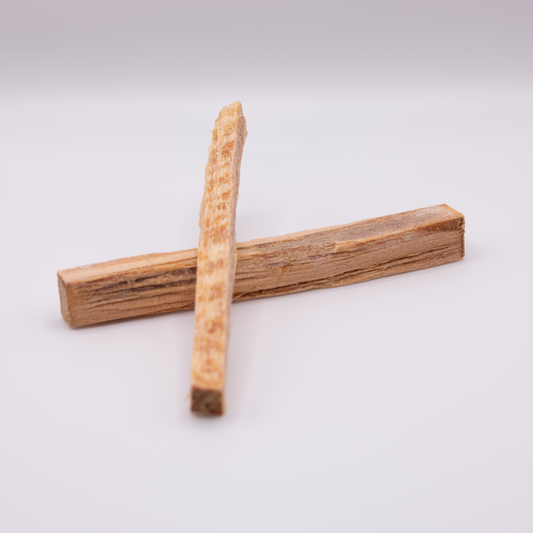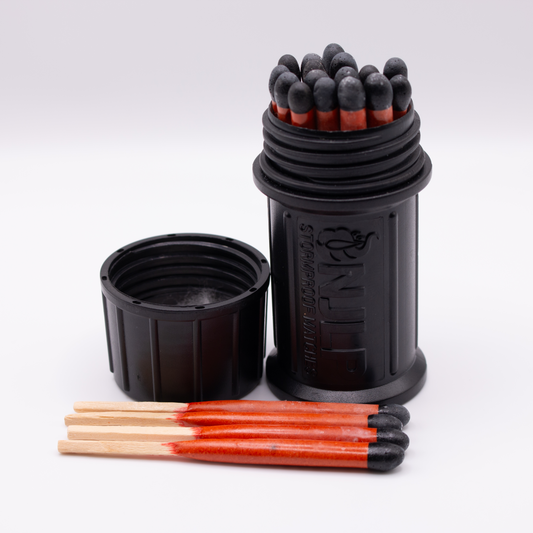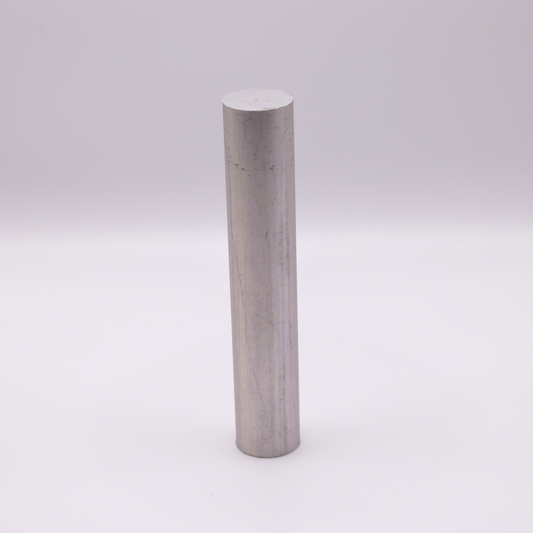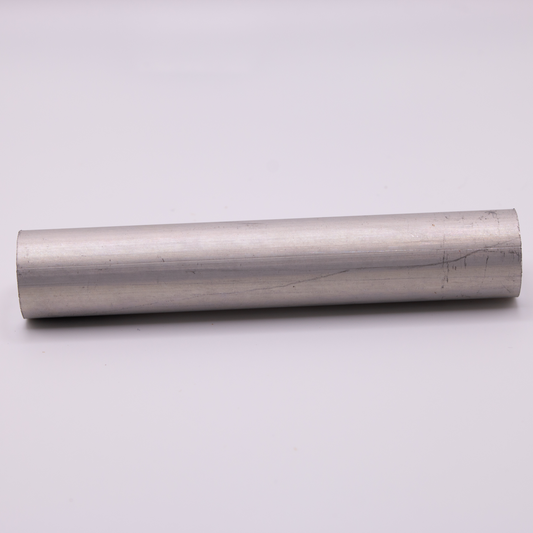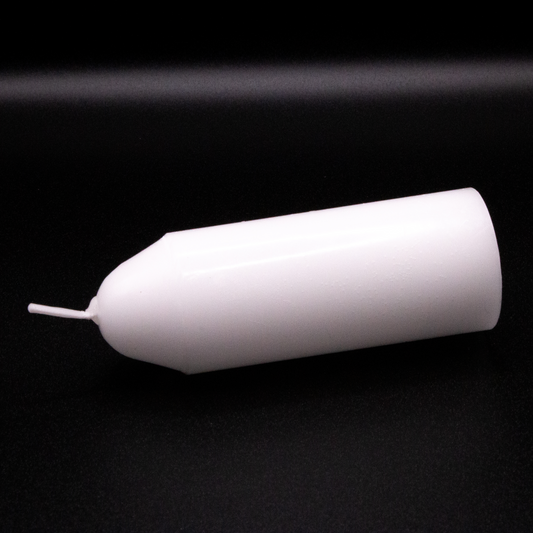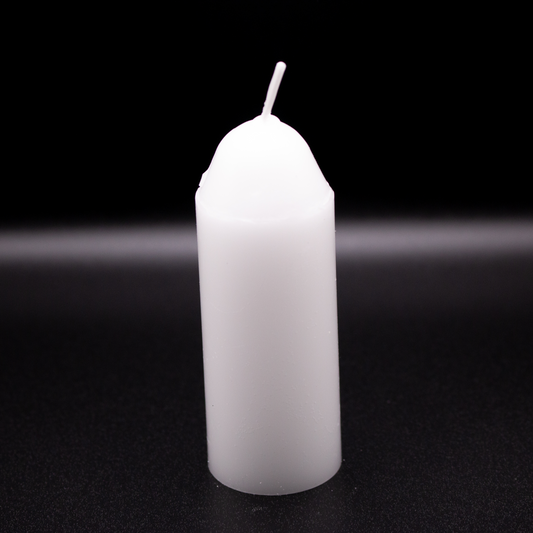These tools are designed to provide an ignition source that can be used to start a fire in any situation. Whether you're camping in the wilderness, on a hiking trip, or facing an emergency situation, a reliable fire starter can provide you with the means to stay warm, cook food, and signal for help.
Fire Starters: Essential Tools for Survival Gear
When you find yourself on an adventure or in a survival situation, having the right tools can make all the difference. One of the most important tools to have in your survival gear is a reliable fire starter.
What are Fire Starters?
They are specific tools designed to help ignite fires in outdoor settings, making them essential for survival gear. They come in various forms such as matches, lighters, ferrocerium rods, flint fire starter, and magnesium bars or shavings. Each type has its own advantages and uses.
Matches, being lightweight and easy to use, make them a popular choice for many campers and hikers. Lighters are another convenient option since they are portable and can be easily refilled. Ferrocerium rods, also known as ferro rods, have a high carbon content and can produce a shower of sparks when scraped against a rough surface. They have become a go-to option in many kits.
Magnesium rods are also relatively common tools that work by scraping off small shavings used to create sparks. Some people carry magnesium in a solid bar form and others elect instead to have pre-shaved magnesium included in their gear. Personally, I prefer the solid bar because I can just shave off as I go. Otherwise, you may have to carry a lot of the shavings.
Understanding the characteristics and proper usage of each option is crucial for outdoor enthusiasts to ensure they can start a fire with minimal effort and safely in any situation. Additionally, practicing the use of these tools before venturing into the wilderness can help build confidence and preparedness for unexpected scenarios.
Why Use Them?
Having the right tool for the job is an important lesson to learn in life and in the wild this becomes even more critical. You may find yourself in some harsh environments where trying to start a fire naturally is just not feasible. In situations like these, you will need to have the right tool for the job. Since matches and lighters can have a short burn time, become damaged, or run out of fuel, tools such as a ferro rod or flint and steel will provide a consistent spark even in these sub optimal conditions. These sparks can readily ignite tinder and kindling, ensuring that you can start a fire quickly and efficiently.
Choosing the Right Tool
When it comes to selecting the perfect tool for you, there are several important factors to take into account. Some common considerations many overlook are ease of use, grip, and size. Look for a tool that is easy to handle and compact enough to carry in your survival gear or backpack. It's also important to select a tool that aligns with your outdoor activities, expected weather conditions, and desired level of convenience and versatility.
For those seeking versatile use, opting for a good fire starter kit is a convenient choice. These kits typically include a variety of fire starters for survival, providing you with different options for starting a fire in any situation.
Top Fire Starters for Different Scenarios
When it comes to choosing the best option for different scenarios, consider each tool's capabilities.
Ferro Rod: A ferro rod is an excellent tool that can be used in a variety of outdoor scenarios. It works well in all weather conditions and can even ignite damp wood. The sparks generated by a ferro rod are hot and can easily ignite tinder and kindling, making it a solid all-around choice for starting a fire in the great outdoors.
Magnesium Bar: Using a magnesium fire starter is an excellent option for high altitude camping trips or situations where you need to start a fire in extreme conditions. Magnesium burns at a high temperature and can even ignite wet or damp materials in windy conditions. It is a lightweight and compact option that should be seriously considered to be included in your survival gear.
Flint and Striker: The flint and steel method involves striking a piece of flint with a steel striker to create sparks that can ignite tinder or char cloth. While it may require a bit more skill and practice compared to other options, it is a reliable and time-tested option.
Matches: Matches are a classic fire-starting tool that is easy to use and convenient to carry. They come in various types, including waterproof matches that can be lit even in wet conditions. Matches are a quick and effective way to start a fire in case of an emergency. Due to their compact size and lightweight design, matches are found in most kits even when other fire-starting options are also present.
Ultimately, the best option for you will depend on your specific needs and the conditions you expect to encounter.
Basic Use of Most Common Options
Most tools are designed to be easy to use, making it simple for even beginners to start a fire. The basic use of most involves striking the ignition source, such as a ferro rod with a striker to create sparks. You then direct the sparks onto tinder, kindling, or wood shavings to ignite a flame. With practice and proper technique, you will be able to easily start a fire in any situation.
Indispensable Tools for Survival
If you plan to spend any extended period of time adventuring in the great outdoors, you will undoubtedly want to have at least one reliable fire starting tool packed in your kit. And we always recommend having a backup. Understanding what they are, why they are crucial, and how to choose the right one can make a significant difference in your outdoor adventures. With a wide range of options available for different scenarios, knowing which option is best for you and knowing how to use it, enhances your preparedness.
Frequently Asked Questions
Can I make my own DIY fire starter?
Yes, you can using common household items. Here are a few options to consider:
Dryer lint: Collect lint from your dryer and store it in a waterproof container. It makes excellent tinder due to its high flammability.
Cotton balls: Soak cotton balls in petroleum jelly and store them in a waterproof container. They will burn for a long time and provide a reliable ignition source.
Fire tinder: Gather natural materials like twigs, leaves, and bark to create your own fire tinder. Dry, fibrous materials work best for easy ignition.
How do I store fire starters safely?
Proper storage is crucial for safety and effectiveness. Here are some tips for safe storage:
Store in a cool, dry place to prevent moisture damage and ensure their longevity.
Keep in airtight containers or ziplock bags to protect them from moisture and humidity.
Handle with care and avoid exposing them to open flames or extreme heat.
By following these storage tips, you can ensure that your essential pieces of kit remain in good condition and are ready for use when needed. Proper storage will help prevent damage and ensure the longevity and effectiveness of your gear.
Are there eco-friendly options?
Yes, there are eco-friendly options available on the market. Many manufacturers now produce options using sustainable materials and practices. Some examples of eco-friendly options include:
Products made from recycled or natural materials, such as recycled cardboard or compressed wood chips.
Products made from sustainable materials, such as bamboo or hemp.
Products that use environmentally friendly fuels, such as bioethanol or vegetable wax.
Can I carry fire starters on a plane?
You may be able to carry some on a plane, but there are certain regulations and guidelines you must follow. Here are a few important points to keep in mind:
Check the TSA regulations for the specific tool you plan to carry. Different tools may have different restrictions.
Any fire starting tools should be packed in your checked luggage rather than your carry-on bag.
Ensure that your tool is properly stored and does not pose a risk to other passengers or the aircraft.
It's always a good idea to check with the airline and TSA before traveling to understand the specific guidelines and restrictions for carrying any of these options on a plane. By following the rules and regulations, you can ensure a smooth and hassle-free travel experience.

